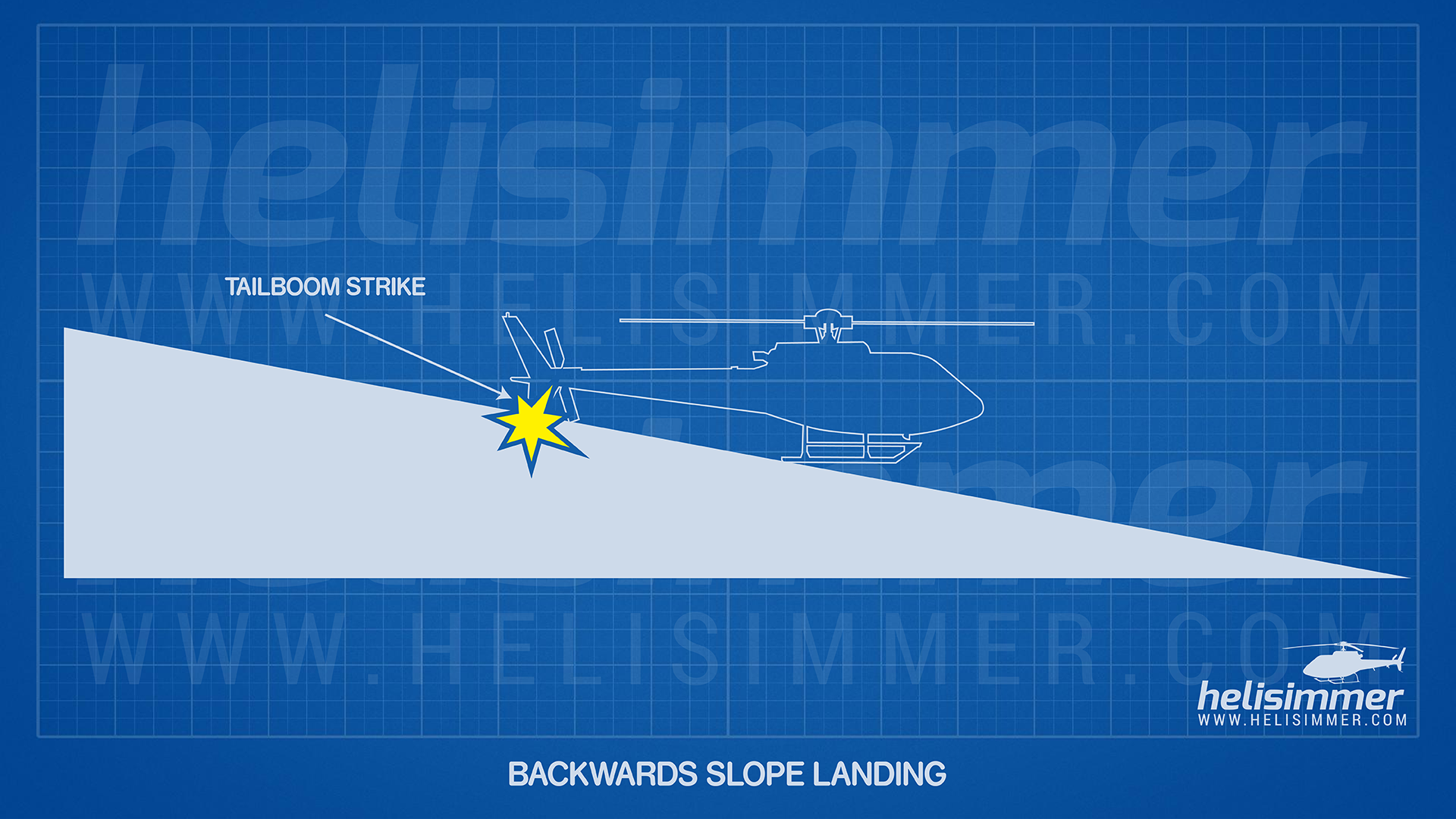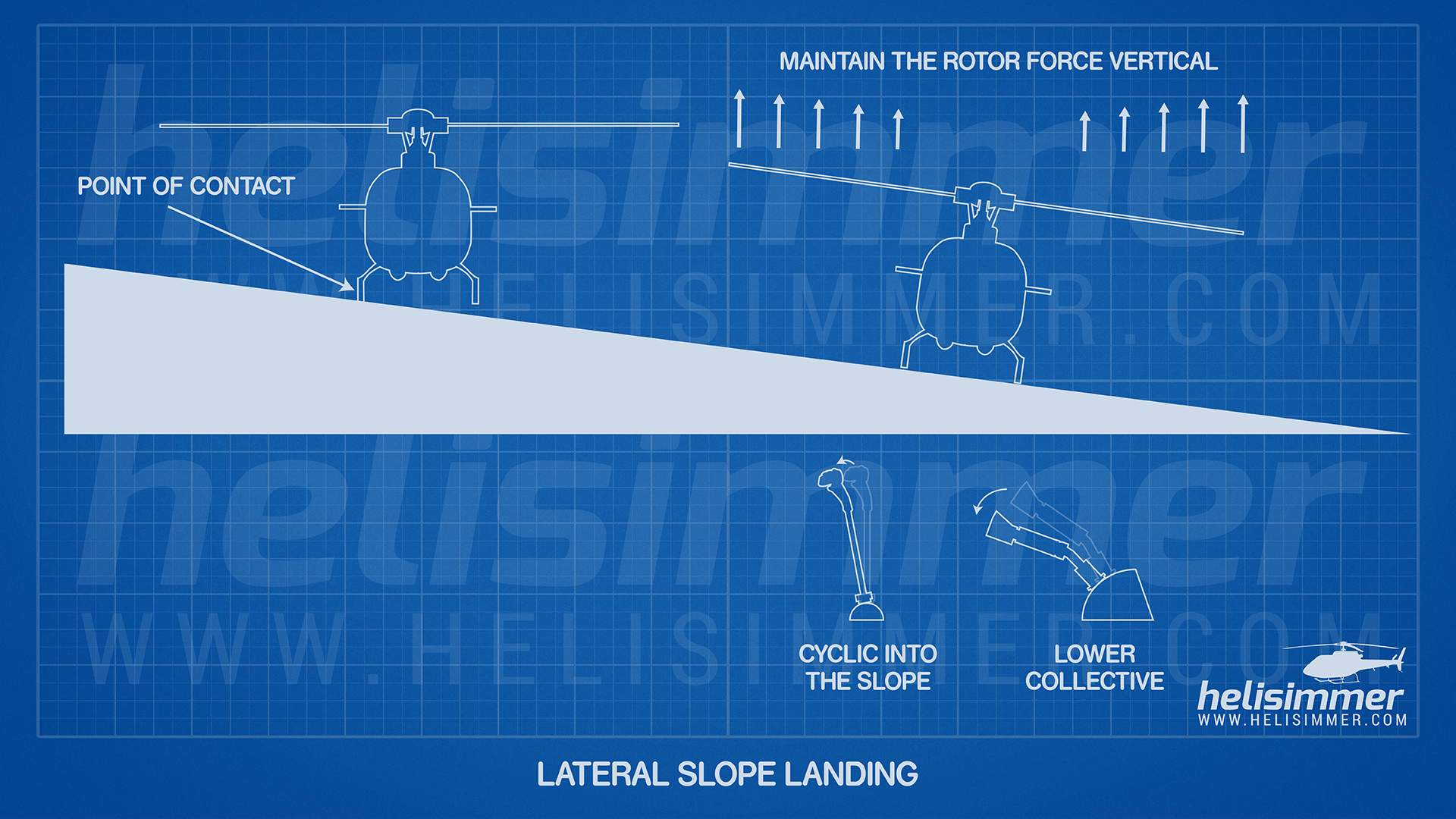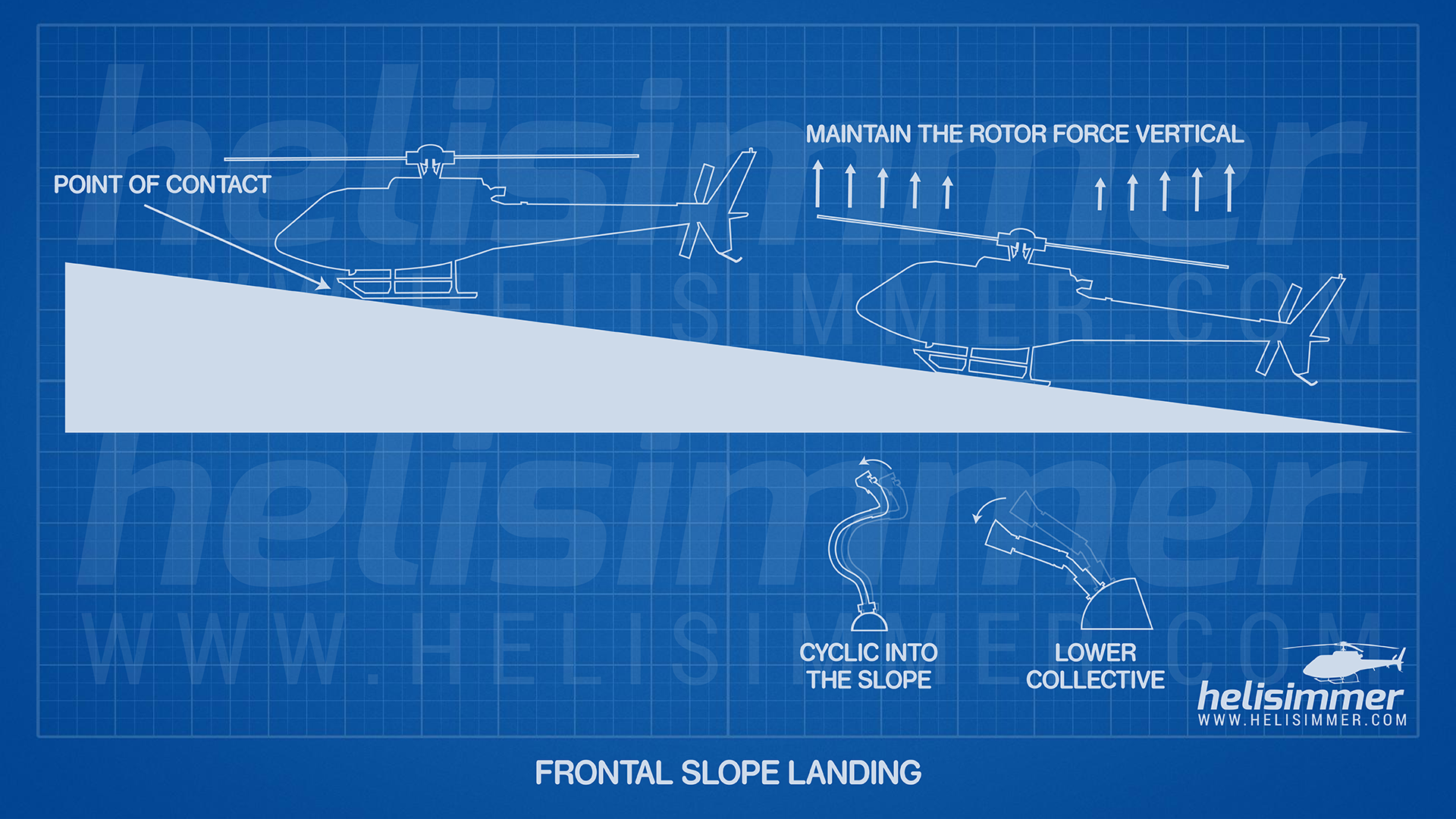By now we already know how hard helicopters are to tame. They want to bite us repeatedly so we need to be on top of everything. Taking off and landing are very demanding tasks and, usually, you perform them on leveled ground, such as runways, helipads or the flat top of a building.
Nonetheless, a huge part of flying helicopters comes from the fact that you can pretty much takeoff and land from anywhere – if you have the room to do so.
Well, the world is not a flat place so you’ll need to learn how to operate from unlevel areas such as slopes.
Choose your angle
Slopes should be negotiated in only two ways: frontally and laterally. That means that the uphill of the slope should be in front of you or at your side. Slight slopes may be negotiated with the uphill behind you but you may risk hitting the ground with your tailboom so, beware.
As always, if possible, keep the wind coming from the front to help stabilize your helicopter.
Negotiating slopes laterally of frontally is pretty much the same as we’ll see.
Check out your helicopter’s slope limits and always check for obstacles or anything that your rotor may hit. Be extra careful regarding obstacles near your skids and there may be some lateral movement, especially on a lateral slope.
Lateral slope
To land on a slope laterally, descend as you would on a regular landing. Be extra careful on the last feet as you will need to control the helicopter after your initial contact with the ground.
On a regular landing, you’ll want to reduce collective immediately after the first contact. On a slope, you’ll want to do it slowly to keep the helicopter under control and prevent it from sliding downhill.
If you simply lower the collective, the helicopter will start moving laterally and you may rollover. This happens because the rotor thrust will be shifted sideways and pull you away.
To prevent this, you will need to move the cyclic into the slope. If the high part of the slope is on your left, move the cyclic left. If the high ground is on your right, move the cyclic right.
The goal is to keep the rotor thrust perpendicular to the horizon. This way you will prevent any lateral movement.
Takeoff
To take, off, you will need to do the same, except you will need to add collective, of course. At the beginning of the maneuver you'll have to cyclic towards the slope. As you start moving upwards, keep the rotor thrust perpendicular to the horizon which you’ll do by slowly bringing the cyclic towards the center.
Frontal slope
You guessed it. The drill’s pretty much the same here.
Descend slowly and move the cyclic forward as you make your initial contact with the ground and lower the collective.
Be careful: lowering the collective too hard may cause a swing motion that, because of the slope (remember that the terrain behind you will be lower so you will “fall” backwards) may throw your tailboom into the ground.
Takeoff
Nothing different here either. As with the landing, though, there’s an extra piece of advice: don’t fly into the ground. Remember that the ground is higher in front of you so either pick up some altitude or turn away from the slope. I would do the latest just to be safe.
Other than that, move your cyclic forward add collective, maintain the rotor thrust perpendicular to the horizon by moving the cyclic back to the center as the back of the skids go up and off you go.
Conclusion
Slopes can be fun but also very dangerous to operate to and from. You will be dealing with different ground-effect levels on your helicopter and other forces working against you.
Although this is pretty normal in our regular operations, slopes add some workload to an already busy situation which is landing or taking off with a helicopter.
Be careful, measure your options, keep your helicopter under control and you will be up for some great fun on uneven terrain.
Credits
I’d like to thank Joe Hudson for all the help and support while writing this article as well as the video.
How to fly helicopters series
Check out the other articles on this series. Click here to see all the available material we have.










